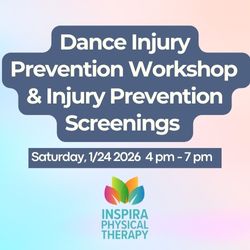Junior Committee
Tuesday, January 16, 2018
DIY Art Spaces Are Integral to Social Wellbeing
In many of our Junior Committee meetings this year (and last year), we’ve talked about the impact of gentrification and the relationship we have to it as young artists and arts administrators. We’ve focused largely on housing, and the complicated connection between young artists as gentrifiers who need affordable housing but also displace low-income communities. But I want to take a moment to discuss a different kind of arts presence in low-income neighbornoods: DIY spaces.
Like young artists, DIY art spaces are also complicated figures. They can, and often do, serve as a beacon for the cool edgy aesthetic of early-stage gentrifying neighborhoods. First comes that “hip” new performance space, then comes the coffee shops, then the organic grocery stores and it really just spirals from there.
But like all things, DIY spaces are multi-faceted creatures. They also serve as places for community organizing, peer support, and a place for art making with much lower barriers-to-entry than other, larger cultural institutions. While the process of gentrification has been easily and readily documented with tons of data behind it, until recently there hasn’t been much data to understand the positive impact DIY spaces can have on their communities.
The University of Pennsylvania’s Social Impact of the Arts Project (SIAP) released a report titled The Social Wellbeing of New York City’s Neighborhoods: The Contribution of Arts and Culture (2017) that used data to better understand the relationship of cultural spaces and social wellbeing. The report used a “Cultural Asset Index” (“CAI”) to understand how a neighborhood’s access to and participation in cultural institutions and nonprofits relates to several different measurements of a healthy neighborhood. Their report found a significant positive correlation between a neighborhood’s CAI score and its scores for three measurements of wellbeing: health, security, and school effectiveness. This trend was especially significant in lower income neighborhoods.
[W]hen we compare lower-income neighborhoods with the highest Cultural Asset Index to those with the lowest Cultural Asset Index, the higher CAI neighborhoods exhibit health benefits that range from declines of 3 to 5 percent in the proportion of the population reporting they suffer from diabetes, hypertension, or obesity; to declines of 25 percent for teen pregnancies; and declines of 14 percent for indicated investigation of child abuse and neglect. The security factor translates into an 18 percent decline in the felony crime rate. The school effectiveness factor suggests declines of around 5 percent in low performance on standardized tests and a 17 to 18 percent increase in the proportion of students scoring in level 4 (highest level) for both Math and English Language Arts.”1
These statistics bring to light concrete benefits artists and arts advocates have long referenced in abstract terms: that access to arts and culture is especially impactful on communities facing systemic challenges. However, “low-income” is only one way of measuring the challenges a community might face, and the study takes great pains to make visible all the different socio-economic factors affecting NYC neighborhoods. For example, within a table demonstrating the correlation of “cultural participation indicators” (how often were residents participating in cultural institutions) and socio-economic variables, SIAP includes: median year housing unit was built, percent under 18 years of age, and distance from Midtown. Just as an example of the range.
Of all the categories, Distance from Midtown had the strongest negative correlation to cultural participation (II-20). It had a stronger correlation than percent unemployed, percent of adults with less than a high school diploma, and percent black and Hispanic. This fact serves to disprove the stereotype that links race and income with likelihood to participate in culture. I.e., the myth that all low income or predominantly POC neighborhoods have NO ART and it’s the responsibility of (largely white) non-profits to come in and provide it for them. In fact, low-income levels and high black and Hispanic populations, had a negligible correlation to cultural participation alone.
That being said, the study showed the most significant change in wellness measurements when it compared low-income neighborhoods with a high CAI to those with a low CAI. This is the key in understanding the positive impact of DIY spaces. But if, and only if, those spaces are inclusive of their communities.
Much of the cultural activity in low-income communities starts out exclusively in DIY spaces. It is often only after a community has been through or maintained a high level of economic development [read: gentrification] that larger cultural institutions arrive. Take for example Williamsburg, Brooklyn. The neighborhood has multiple DIY spaces, many over 10 years old, and has only recently seen the arrival or larger cultural institutions like the multi-media company VICE or commercial concert venues such as Output [read: late stage gentrification]. This is not to say that these institutions arrived in Williamsburg because of the DIY spaces, but that before they arrived Williamsburg residents were benefitting from the culture created in DIY spaces.
From a different perspective, this data can also be used to hold DIY spaces accountable. It demonstrates that unless a space welcomes the neighborhood residents as co-creators and partners, the space can’t claim to benefit the area’s wellbeing. No longer can a space claim that just because they make art they’re benefitting their neighborhood.
Having more, data-driven information like this is crucial for the future of the arts and cultural sector. We’re now in the time of big-data, and anecdotal evidence of the impact of the arts is no longer particularly convincing. People everywhere (especially funders) are demanding more and more that organizations and artists supply numbers that back up their claims. We see that too in the Cultural Plan’s desire to directly link city funding to staff and board demographics that reflect the communities they serve.
So three cheers to the SAIP for gathering the data! Keep doing what you’re doing. And to my fellow artists and arts workers, use this info if it applies to you! If it doesn’t apply to you, maybe take a moment to reflect on the kind of way you’re relating to your community, and ask yourself if, knowing this new information, you’re having the impact you want to be having.
---
[1] Stern, Mark J. and Seifert, Susan C., "The Social Wellbeing of New York City's Neighborhoods: The Contribution of Culture and the Arts" (2017). Culture and Social Wellbeing in New York City (2014-16). IV-11



